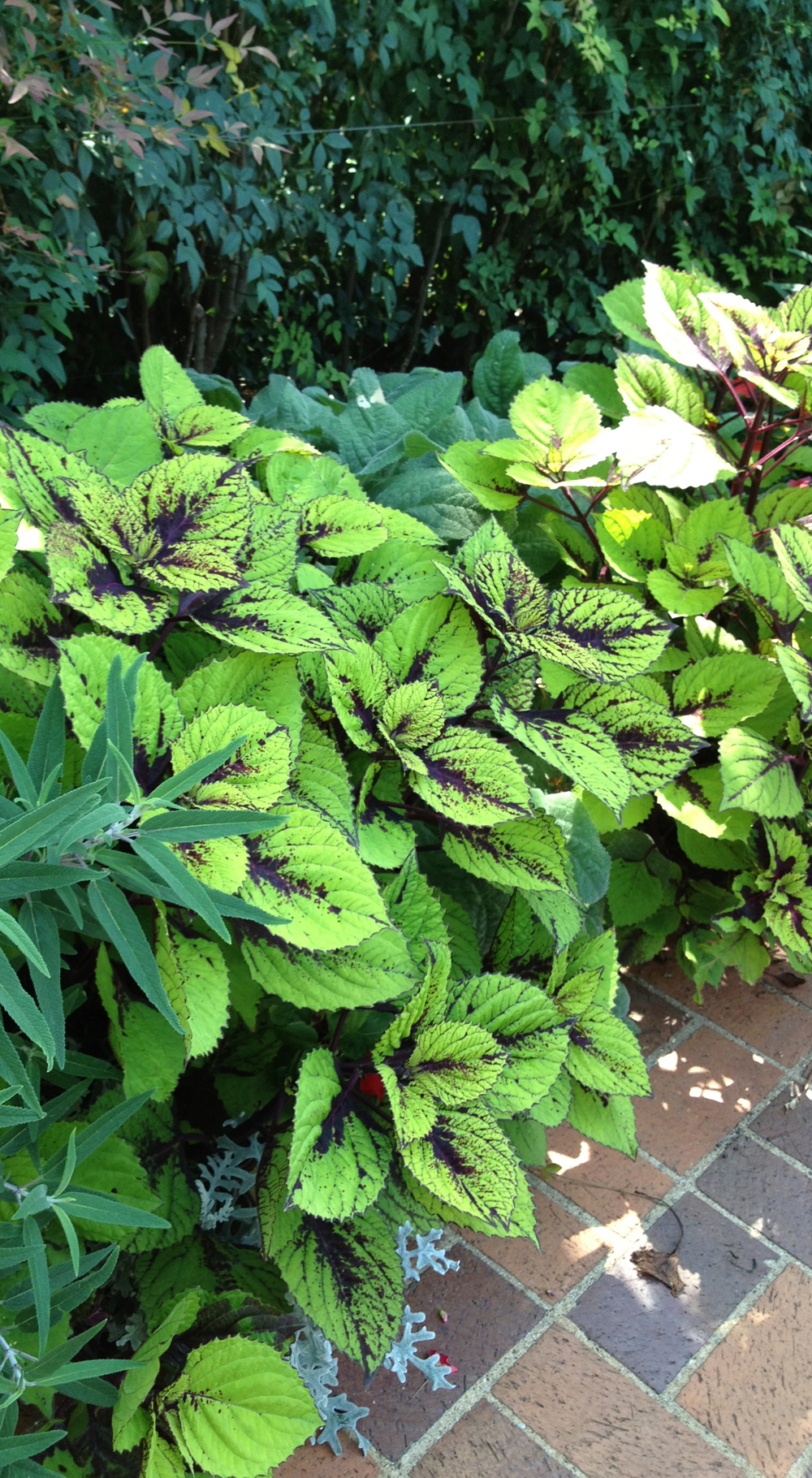Coleus
Coleus, Solenostemon (Coleus)
There is a coleus for everyone. With foliage from brash yellows, oranges and reds to deep maroon and rose selections, coleus has colors, textures and variations that are almost limitless.

Growing
Coleus prefers to grow in light shade or partial shade, but it tolerates full shade if the shade isn’t too dense or full sun if the plants are watered regularly. The soil should be of average to rich fertility, humus rich, moist and well drained.
Place the seeds in a refrigerator for one or two days before planting them on the soil surface; the cold assists in breaking the seeds’ dormancy. The seeds also need light to germinate. Seedlings are green at first, but leaf variegation develops as the plants mature.
When flower buds develop, it is best to pinch them off, because the plants tend to stretch out and become less attractive after they flower.
Tips
The bold, colorful foliage makes a dramatic impact when the plants are grouped together as edging plants or in beds, borders or mixed containers. Coleus can also be grown indoors as a houseplant in a bright room.
Recommended
S. scutellarioides (Coleus blumei var. verschaffeltii) forms a bushy mound of foliage. The leaf edges range from slightly toothed to very ruffled. The leaves are usually multi-colored with shades ranging from pale greenish yellow to deep purple-black. Dozens of cultivars are available, but many cannot be started from seed.
Features: brightly colored foliage; light purple, insignificant flowers
Height: 6–36"
Spread: usually equal to height
Sidebar
Many new sun-tolerant varieties, which are vegetatively propagated, are available.


